Above:Three Ladies with Japanese umbrellas at Waihi Beach, c. 1927, photographer unknown. Image courtesy of Western Bay of Plenty Archives.
Aotearoa New Zealand holds a rich and diverse national history, but it is important not to overlook the value that local history offers within different regions across the motu. Local heritage and taonga encapsulate the memory and unique attributes of our communities, and preservation is imperative to ensure that this information and knowledge is safeguarded for the future.
Western Bay of Plenty is a rapidly growing region in the North Island with a heritage deeply rooted in both Māori culture and colonial history. To provide access to the region’s heritage and share community stories, the Western Bay of Plenty District Council launched its Recollect site, Western Bay of Plenty Community Archives, in 2016. It recently underwent a site refresh, managed by NZMS, to align with the council’s new branding and website. The refresh transformed the UX design of the site to ensure that the council’s branding is consistent across all its channels. NZMS spoke with Sandra Haigh, the council’s Community Heritage Services Coordinator, to understand the importance of preserving the stories of Western Bay of Plenty and how the site refresh has contributed to achieving that goal.
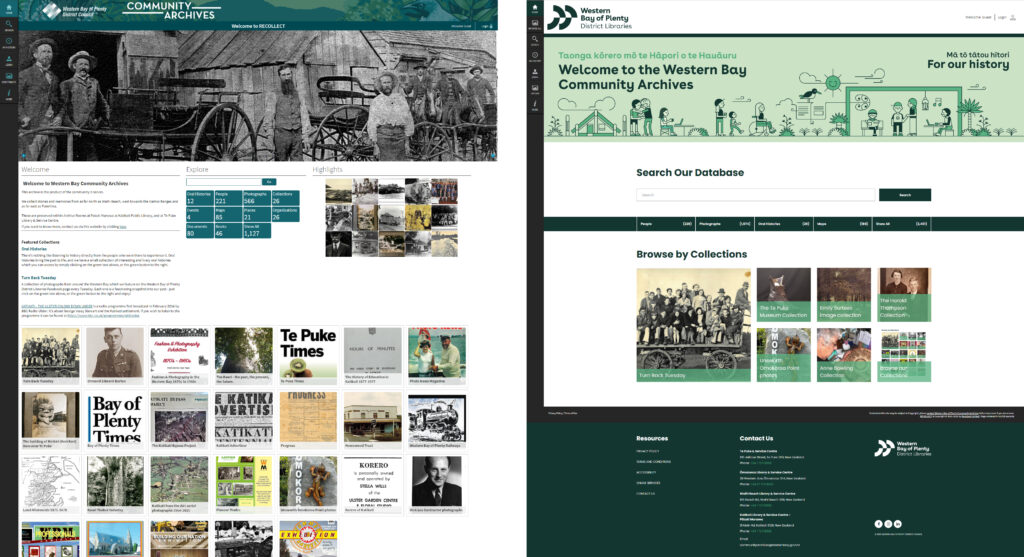
“The refresh brings the site in line with the council’s branding which has undergone a major change in both look and feel. The landing page is now really clean and clear – the previous site was very cluttered by comparison.”
– Sandra Haigh, the Community Heritage Services Coordinator, Western Bay of Plenty District Council.
From Dartboards to Avocados
The Western Bay of Plenty spans 212,000 hectares of the eastern North Island from Waihī Beach to Otamarakau and features a range of coastal, rural, and urban areas. The Western Bay of Plenty Community Archives collects material from this area, including communities such as Katikati, Ōmokoroa, Te Puna, Te Puke, Maketu, and Paengaroa. The heritage of nearby Tauranga, Mt Maunganui, and Papamoa is looked after by Tauranga City Libraries instead, through their own Recollect site Pae Korokī.
“The waka most closely associated with the rohe are Mātaatua, Takitimu, and Te Arawa. There are 23 marae in the Western Bay of Plenty, representing 11 iwi and 74 hapū. Their history is rich beyond measure. Tauranga Moana was, and still is, an extremely desirable place to live. The food has always been plentiful, the climate relatively benign (although that might be changing), and the land forgiving.”
–Sandra Haigh, the Community Heritage Services Coordinator, Western Bay of Plenty District Council.
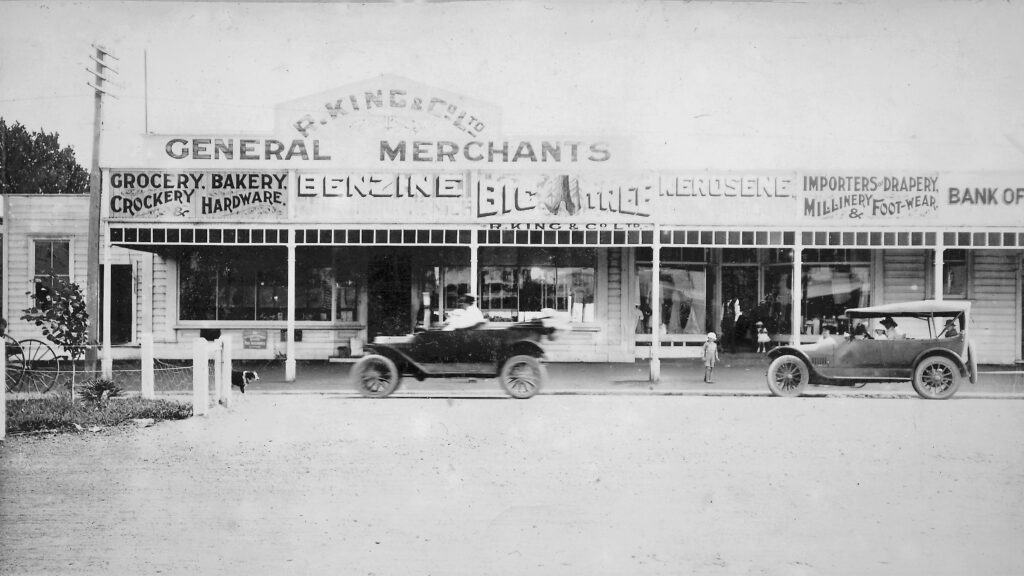
Horticulture serves as one of the main sources of income for those residing in the Western Bay of Plenty: in particular, Te Puke has developed a reputation as the kiwifruit capital of New Zealand, while Katikati claims the status of avocado capital. Beyond the thriving horticultural industry, the Western Bay of Plenty is also home to other unique businesses that have made significant contributions both on a local and national scale. For example, Shot Darts, headquartered in Katikati, stands as a global leader in the design and manufacture of darts and dartboards. The Western Bay of Plenty Community Archives plays a vital role in documenting the region’s economic heritage and ensures that the vibrant history of these local businesses is preserved for future generations.
“I first started working for the council in 2011 and was really impressed with the town of Katikati, where I was based. I was shown the tiny archives room in the old library building which was filled with shelves of folders filled with stories of the early settler residents of Katikati. My learning extended to Te Puke, then Maketu, and the rest of the district.”
– Sandra Haigh, the Community Heritage Services Coordinator, Western Bay of Plenty District Council.
Protecting Local History with Recollect
Western Bay of Plenty Community Archives was founded with a clear mission: to protect the history of the region while providing the community with easy access to archived material. There was a risk that this taonga could be lost without comprehensive preservation efforts, which included digitisation.
“I felt that this history needed to be preserved – it was in danger of being lost as there was no one looking after it who had a professional background in conservation and archives. The volunteers who ran the existing archives had a lot of enthusiasm but no skills; no disrespect to them of course since they were the ones who recognised the need for the stories to be kept and told.”
– Sandra Haigh, the Community Heritage Services Coordinator, Western Bay of Plenty District Council.
Sandra’s search for a content management system to protect the digitised material led to her deciding that Recollect was the most suitable choice. The modern, cloud-based platform provided efficient and adaptable collection management tools, all while helping to bolster community engagement with the material.
“Recollect already had a reputation for excellence, and it wasn’t difficult to come to the conclusion that we had to go this way. The decision was made and supported by Council in 2015 and work began on creating the site. We gave it a soft launch in 2016 and it did have a slow start because there was only one part-time archives assistant to populate it until I began my work as a full-time Heritage Coordinator/ Kaiwhakarite Ratonga Tikanga Hapori in 2018.”
– Sandra Haigh, the Community Heritage Services Coordinator, Western Bay of Plenty District Council.
Recollect’s capabilities extend to both managing individual items within a collection and telling the stories of a collection as a whole. Its storytelling features can help unearth connections among items and bring information to the surface more intuitively, creating a virtual breadcrumb trail through the collection.
“I try to bring information from varying sources into one place using Recollect – as an example, I will take a photo of a wedding and upload it, try and find the account of the wedding on Papers Past and link that to the photo. Then if there is a profile about a person on the site (perhaps about the bride groom, or their parents) or another relevant photo with a story attached, I’ll link to that as well. A good example is Jessie Lockington’s wedding. This is probably why it’s a small site – I prefer quality over quantity and Recollect is really good for this.”
– Sandra Haigh, the Community Heritage Services Coordinator, Western Bay of Plenty District Council.
Engagement and Responding to Change
Western Bay of Plenty Community Archives has a membership base of 138 people which primarily consists of local historians, council staff, and even teachers. There is an expectation that facilitating online access to local history could assist educators in the region to teach the Aotearoa New Zealand’s histories curriculum. Access to the material held in the Western Bay of Plenty Community Archives can integrate authentic, first-hand knowledge, and the provision of primary source materials affords students the opportunity to gain unique insights into the history of their own community.
“The site is important to the community, especially with our tamariki learning about New Zealand history. Sites like this are valuable tools for enriching our understanding of the factors that have shaped both our present circumstances as a community and our collective identity.”
– Sandra Haigh, the Community Heritage Services Coordinator, Western Bay of Plenty District Council.
The needs of a community are always shifting and are often influenced by major events or societal issues – one example is the upheaval brought on by the COVID-19 pandemic. Access to online digital resources and materials was incredibly important during lockdown periods and staying responsive to these changes meant that the local community’s engagement with Western Bay of Plenty Community Archives increased exponentially.
“I have done a lot of promotion about the site through the libraries’ social media and I’ve also talked to the local paper about its value, but the best promotion we received was because of Covid-19. The pandemic really highlighted the importance of online access to our heritage and resources. The monthly page views went from about 13,000 to 45,000 per month in April 2020 alone, and since then it’s just kept going up. It even broke 100,000 page views several months ago!”
– Sandra Haigh, the Community Heritage Services Coordinator, Western Bay of Plenty District Council.
Sandra also makes sure to mention Western Bay of Plenty Community Archives at the events she hosts during Family History Month and encourages the local museum to use it when they are searching for information about heritage specific to the region. Western Bay of Plenty Community Archives has also been in partnership with Digital NZ since 2019 which allows the archive to be included among an even larger database of heritage material from right across Aotearoa New Zealand.
“The Western Bay Community Archives site showcases the stories of ordinary people – they were not famous or wealthy, but their story has just as much value as the story of our more well-known compatriots. Our community loves it because people enjoy seeing their families and ancestors featured on the site, even though they were ‘just’ farmers, butchers, or whatever. Everybody loves a good story and there are many here in the Bay!”
– Sandra Haigh, the Community Heritage Services Coordinator, Western Bay of Plenty District Council.
Collection Highlights
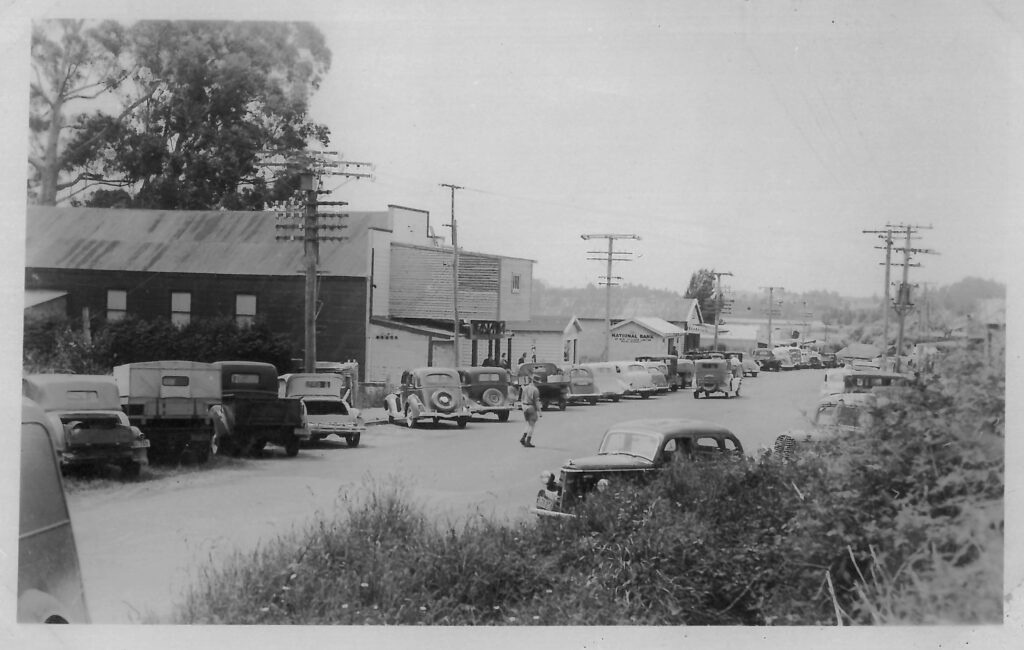
Katikati’s iconic theatre had its origins on Mueller Street in Waihi, where it was known as “Everybody’s Theatre”. The theatre, constructed from kauri wood, was later relocated to Katikati by Bill Henderson. The cinema’s interior was adorned with plush red tip-up seats, stage curtains that gracefully unveiled the screen, and an upstairs gallery. The theatre showcased silent-era films in its early days, and Bill’s wife, Eva (a skilled pianist) provided musical accompaniment, creating an immersive experience that included improvised sound effects. She even went as far as mimicking hoofbeats by tapping her feet on the floor! In 1947, Bill sold the business to the Purcells, and it was subsequently rebranded as the Plaza Picture Theatre. Today, the retail complex Cherry Court occupies the former site of the Katikati Picture Theatre.
“It’s long gone now, but our old identities remember this building with a great deal of affection. In fact, this was one of the photos that prompted Erin Kennedy, a descendent of the picture theatre’s proprietor and his wife, to contact me via the Recollect site and let me know that she had a number of photographs that she wished to upload. I encouraged her to do so, but she decided that she would rather deposit the collection of photos with me instead of keeping them, so she drove up from Masterton and we had a wonderful meeting. I shared what I had in the collection, and she kindly deposited her photos with me.”
– Sandra Haigh, the Community Heritage Services Coordinator, Western Bay of Plenty District Council.
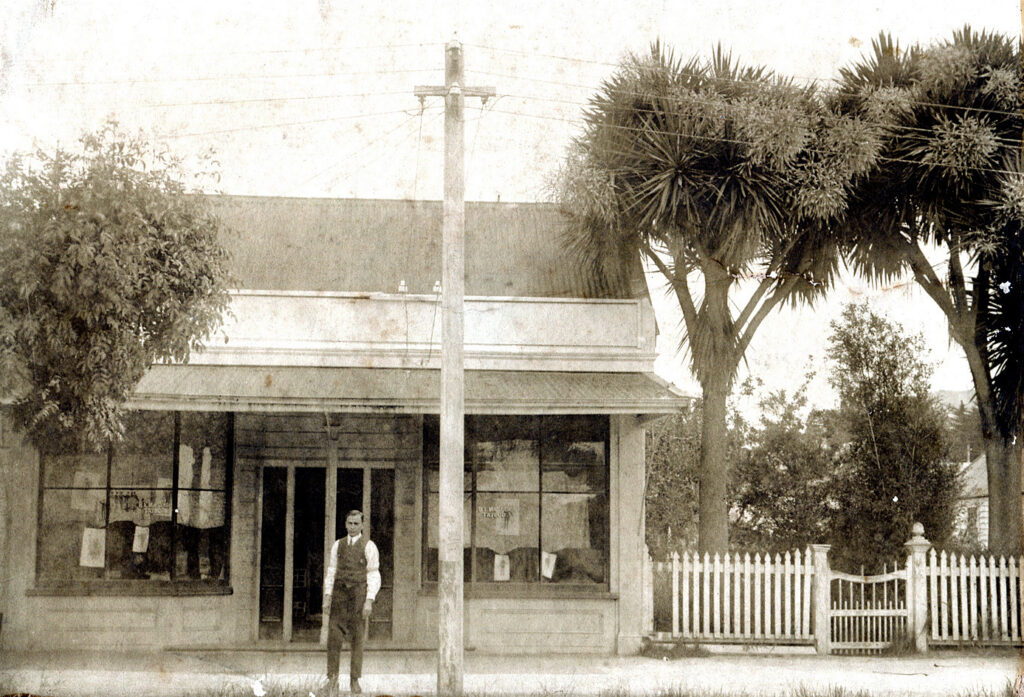
This photograph shows a man called Mr. Bhukhandas Luxmidas Mastar outside his tailor’s shop on the main street of Te Puke. He had a long tenure in Te Puke, spanning from 1924 to 1949, and was well-known in the community. He eventually closed his shop when he returned to India where he spent the remainder of his life. Meanwhile, his two sons chose to remain in Te Puke and his grandson, Harendra, currently resides in Wellington.
“Mr. Mastar was an unknown quantity to me when I found this photo in the Te Puke archive room – the photograph only had his name written on the back. It wasn’t until his grandson Harendra contacted me by email looking for information on his grandfather that I found out a bit more. Harendra lives in Wellington and knew very little about Mr. Mastar and together we managed to put a few pieces together with the help of a senior member of the community who remembered Mr. Mastar’s sons! Mr. Mastar would have surely been one of a very small community of Indians in New Zealand at the time.”
– Sandra Haigh, the Community Heritage Services Coordinator, Western Bay of Plenty District Council.
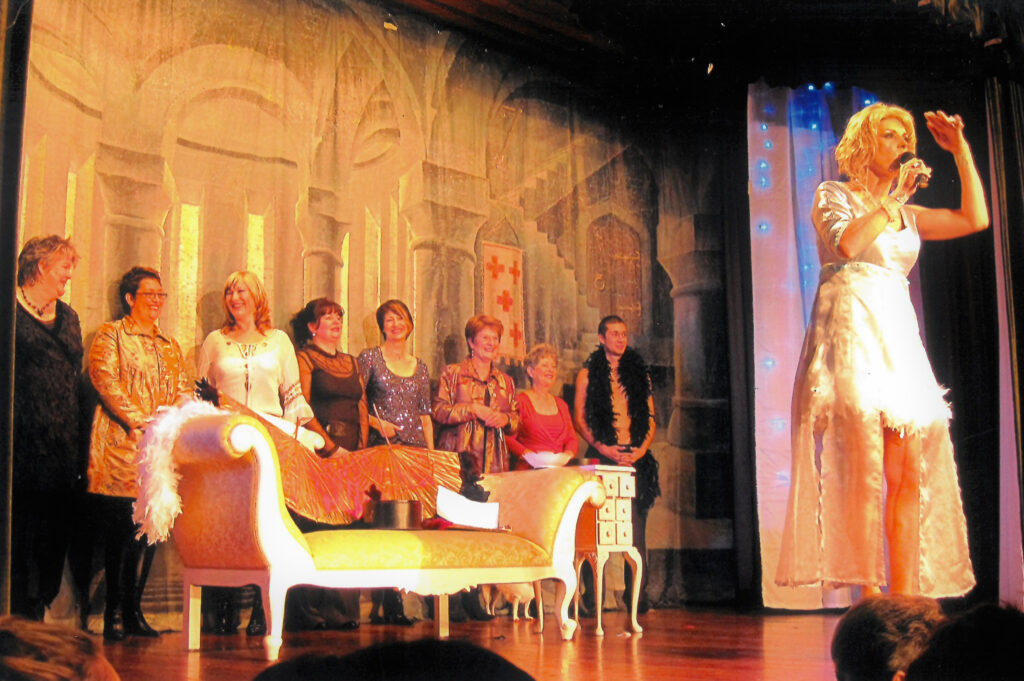
In this photograph, Crystal Chandelier is captured in her role as the emcee for the Winter White Fashion Show, which took place at the Katikati Memorial Hall. The event’s purpose was to raise funds for the Fashion and Drama Department at Katikati College. Crystal is a widely recognised figure in the Katikati community, and from 2007 to 2009, she successfully owned and managed Virtue Boutique located on Main Road in Katikati. She actively contributed to the community by frequently serving as the master of ceremonies for fundraising events in both Katikati and Waihi Beach. Currently, she resides in Paihia and operates CCs Closet.
“Crystal Chandelier graced Katikati with her presence in the mid-2000s and was a much-loved member of this community, which was pretty amazing since Crystal was actually Robert Anstruther-Burson and Katikati is a very conservative rural community. She has now fully transitioned and runs CC’s Closet in Paihia. When I put this photo on Recollect and on our FB page, she was so thrilled that she DM’ed me to thank me very much for doing it!
– Sandra Haigh, the Community Heritage Services Coordinator, Western Bay of Plenty District Council.
